Professor of Mathematics Stephan Garcia has been awarded the inaugural Mary P. Dolciani Prize for Excellence in Research from the American Mathematical Society. He was recognized for his outstanding record of research in operator theory, complex analysis, matrix theory and number theory, for high-quality scholarship with a diverse set of undergraduates and for his service to the profession. The award recognizes a mathematician from a department that does not grant a Ph.D. who has an active research program in mathematics and a distinguished record of scholarship.
Pomoniana
Pomona Votes
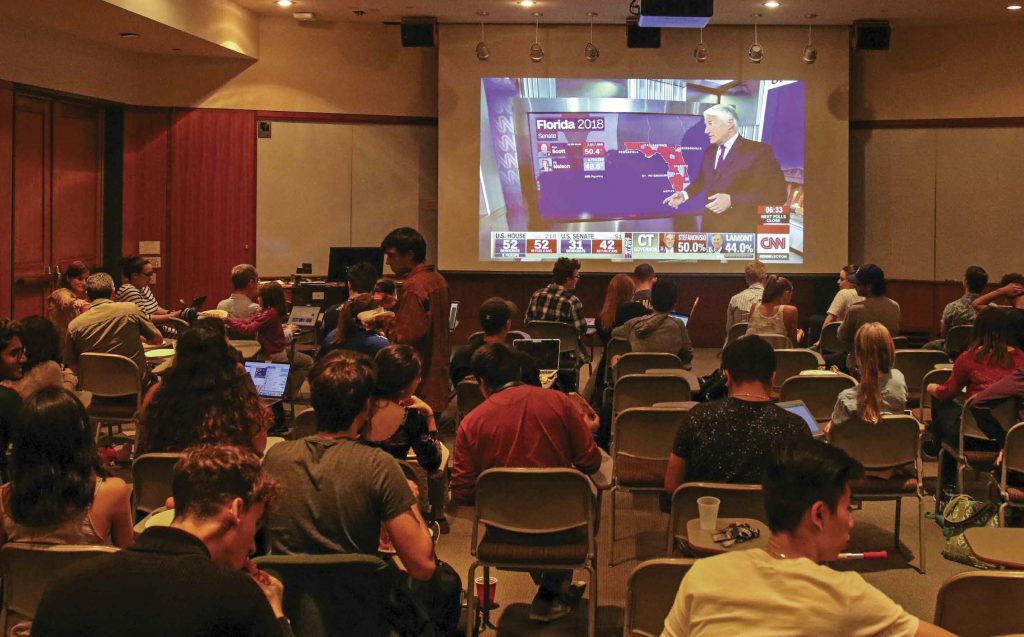
In the midterm elections of 2014, according to a Tufts University survey, only 17 percent of Pomona College students cast a vote. Four years later, a group of concerned Pomona students turned to an online voting support site to give those numbers a boost.
Student leaders Michaela Shelton ’21 and Lucas Carmel ’19 led the outreach effort, encouraging their fellow students to sign up with TurboVote, an online tool that helps users take the first steps to register to vote or to request an absentee ballot.
“A recent Pew study revealed that about 75 percent of nonvoters are not voting due to logistical concerns, confusion,” says Carmel. “Where to get a stamp? How to request an absentee ballot? Where’s their polling place? The same thing is true for college kids—but if you’re concrete with people and help them with the process, you can eliminate many of those barriers.”
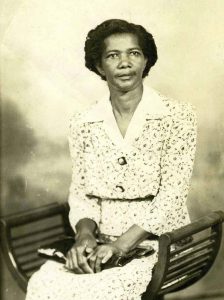
A portrait of President Starr’s grandmother, Ethel Starr, whose dedication to voting was featured in an op-ed in the Washington Post.
President G. Gabrielle Starr joined in encouraging students to get out and vote, not only on our own campus but across the nation. In an op-ed titled “Dear College Students: My grandmother waited 70 years for the right to vote. Don’t ignore this chance,” published in The Washington Post in late October, Starr told the story of her grandmother, Ethel Starr, who was nearly 70 when the Voting Rights Act was passed in 1965. “As a child in the 1970s and ’80s, I always knew when it was Election Day,” she wrote. “My grandma got dressed in her Sunday best, put on her black shoes, hoisted her hard, black pocketbook, adjusted her hat and waited by the door for my father to drive her to the polls. She never missed an election. …”
“Do something no one else can do for you,” Starr concluded. “The students I’ve worked with know I love a good dare. And I send one back. I dare you.”
The efforts at Pomona seem to have succeeded in stimulating greater interest in voting, as TurboVote reports that about 40 percent of all Pomona students—703 to be exact—signed up for the service prior to Election Day.
Tech for Sleepy Drivers
 Driving back to campus from L.A. late one night, computer science major Eberto Andre Ruiz ’19 felt himself drifting off at the wheel. Worried, he grasped for a solution.
Driving back to campus from L.A. late one night, computer science major Eberto Andre Ruiz ’19 felt himself drifting off at the wheel. Worried, he grasped for a solution.
“I’m like, ‘Man, this is not safe,’ so I told Siri to set a timer for every five minutes,” he says. “I woke up the next morning and thought, ‘I’ve got to make an app for this.’”
Enter the 5C Hackathon—a one-night coding competition. In early November, Ruiz joined classmates Peter Nyberg ’19, Thomas Kelleher ’19 and Brook Solomon ’19 to built a prototype called Olert, with the O reminiscent of a steering wheel.
“Basically we were interested in doing something that was ‘Tech for Good,’ an idea in some way applicable to the real world,” Nyberg says. “This is something that takes lives.”
Using a camera and eye-tracking software, they built a system that would vibrate the steering wheel if the program detected signs of drowsiness in the driver’s eyes.
One after another, checking out some of the 20 projects submitted after the Hackathon, students from the 5Cs sat down and gripped the makeshift steering wheel the team fashioned with the leather cover from the steering wheel of Ruiz’s Nissan Altima. Sure enough, they felt it vibrate when their eyes closed.
As a result, Olert took the Hackathon’s top prize for the best “Tech for Good” project.
Suits, Shorts and the Working World
 At Goldman Sachs in San Francisco, the ambience was formal and there were plenty of suits. At the consulting firm Accenture, one of the leaders wore jeans and sneakers but kept a blazer handy. At another company across the bay, the highest-paid employees wore shorts. (That would be the Golden State Warriors.)
At Goldman Sachs in San Francisco, the ambience was formal and there were plenty of suits. At the consulting firm Accenture, one of the leaders wore jeans and sneakers but kept a blazer handy. At another company across the bay, the highest-paid employees wore shorts. (That would be the Golden State Warriors.)
In the working world, clothes are a clue, but they might not tell the whole story. That’s just one of the lessons 12 Pomona College sophomores who identify as low-income or first-generation college students learned last fall in an innovative new program. Smart Start Career Fellows is designed to teach students about a working world unfamiliar to many of them. The program concluded in January with a three-day trip to the offices of seven Bay Area businesses.
One of the things Smart Start taught Leisan Garifullina ’20, an economics major from Russia, was the difference between business casual and business formal.
“I had this awkward situation last semester where I went to an information session—I think it was Citibank. I showed up in shorts and the nicest, nicest T-shirt that I had,” she says. Now, with the help of a stipend from the program, “I have business casual,” Garifullina says.
On the Bay Area trip, the students connected with new contacts as well as Pomona College alumni, visiting the offices of Kate Walker Brown ’07, an attorney at the National Center for Youth Law; Natalie Casey ’17, a software engineer at Salesforce; and Adam Rogers ’92, deputy editor at Wired magazine. The group also went to LumiGrow, a startup company that offers high-tech, energy-efficient horticultural lighting solutions, in addition to Goldman Sachs, Accenture and both the business offices of the NBA’s Warriors and a game that night against the Los Angeles Clippers.
Created with grants from Accenture and John Gingrich ’91, a managing director at the firm, the Smart Start program began last fall with a series of two-hour Friday night dinner sessions where the students took part in self-assessment exercises and various networking, résumé and career-coaching sessions.
“Every single place we went to in San Francisco, you could ask yourself, ‘OK, could I see myself coming in here every single day for a long period of time, maybe two, three or 10 years?’” mused Shy Lavasani ’20, an economics major from Millbrae, California, whose family emigrated from Iran. “Could I see myself really enjoying this job? It just really helped me thinking about that at every single location, what I really want, what I really need. It gave me a clear direction in terms of what I want to do.”
No job seemed out of reach, except maybe one. “I don’t think any of us were considering pro basketball,” he says. “It’s always nice to dream.”
Who’s the Most?
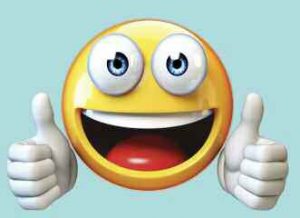 Rosalind Faulkner ‘19 is podcasting superlatives.
Rosalind Faulkner ‘19 is podcasting superlatives.
Earlier this year, Faulkner launched “The Most,” a SoundCloud podcast in which she interviews Pomona students who embody a particular characteristic the most of anyone on campus—the most quirky, the most flirty, the most existential. Students nominate potential interviewees on Faulkner’s Facebook page, and whoever receives the most votes joins her in her KSPC studio for a 15-minute breakdown of the chosen adjective and what it means to them.
Faulkner, who has been interested in podcasting since she created her first podcast during her study abroad in Morocco last year, wanted to use an interview format to explore the idea of social reputation. “So many people here have really big personalities or things that distinguish them in different ways,” Faulkner says, and boiling that nuanced personality down to a single label—like “the most existential”—seems limiting.
But though she expected many people to resist being defined by a lone adjective, most students have embraced their superlatives. “My original intention was to subvert it, but some people do genuinely think of themselves in these big ways,” Faulkner says. “At least two of the three were so thrilled to be chosen for these adjectives. They were so happy.”
On-The-Job Training
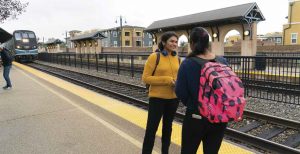
Noor Dhingra ’20 likes to start her Fridays with a cup of coffee in the Claremont Village before wandering over to Claremont Depot, the gorgeous 1927 Spanish Colonial Revival train station where she catches the 8:42 Metrolink to Los Angeles.
Her roommate, Tulika Mohan ’20 takes a different approach. “I should be getting up at 7:45. I don’t,” Mohan laughs. “I usually end up getting up at 8:10, and then I run.”
Together, with headphones on or book in hand, they ride to one-day-a-week internships in L.A. subsidized by the Pomona College Internship Program (PCIP), a program that provides a stipend that turns an unpaid internship into a paid one, along with an allowance for transportation—in this case, train tickets for Dhingra and Mohan.
Taking the train to L.A. for an internship during the school year takes time—students often start work at 10 to allow for the commute—but many say the train beats fighting traffic even if someone has access to a car.
“I just find it fun. You don’t feel like a student when you’re on the train, which is a really good feeling to have once a week,” Dhingra says. “You’re so used to seeing professors or students on campus, so it’s just nice being with people of different ages. I always hear conversations, and sometimes it turns into a story I write.”
Zero-Waste Commencement
 Just before her own senior year arrived, Abby Lewis ’19 was working to send off Pomona’s 2018 graduates in the most environmentally-responsible way possible—with a zero-waste commencement.
Just before her own senior year arrived, Abby Lewis ’19 was working to send off Pomona’s 2018 graduates in the most environmentally-responsible way possible—with a zero-waste commencement.
Armed with information and data from the Office of Sustainability, where she works during the year, Lewis noticed a significant spike in the College’s waste production during the month of May, when thousands come to campus for the annual Commencement ceremony. Working closely with Alexis Reyes, assistant director of sustainability, she started working on a zero-waste event model.
An event is deemed ‘zero-waste’ when organizers plan ahead to reduce solid waste, reuse some event elements in future years and set up compost and recycling stations in order to divert at least 90 percent of waste from landfills. For Pomona’s 2018 Commencement Weekend, Lewis focused, among other things, on the catered food and products served at the reception on Commencement Day.
Backed by a President’s Sustainability Fund grant, Lewis worked with Pomona’s catering management on details ranging from the type of wax paper used to wrap food, to proposing utensils that are compostable and the use of reusable sugar containers instead of sugar packets.
Instead of trash bins, Commencement attendees found recycling and composting stations where they could sort their waste. Nearly all food waste generated, such as plates, cups and napkins, was diverted to either compost or recycling. The disposable products used at Commencement were made from either corn starch or recycled paper.
Another key partnership that Lewis secured with the help of the Office of the President’s Christina Ciambriello and Reyes was a deal with Burrtec, the College’s disposal contractor. Lewis and her allies were able to convince the company to collect and process ‘industrially-compostable’ items such as specially labeled plates and napkins—something they usually don’t do as part of their service to the College.
Fulbright Fellows Criss-cross the Globe
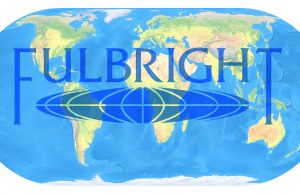 Twelve Pomona College recipients of the prestigious Fulbright fellowships are criss-crossing the globe this fall, doing research on independent projects or teaching English. Here’s a brief description of their plans:
Twelve Pomona College recipients of the prestigious Fulbright fellowships are criss-crossing the globe this fall, doing research on independent projects or teaching English. Here’s a brief description of their plans:
Audrey DePaepe, a neuroscience major from Tualatin, Ore., takes her Fulbright to the Cognition & Brain Plasticity Unit of Barcelona in Spain and focuses her research on Huntington’s disease.
Jack Gomberg, a neuroscience major from Chicago, Ill., travels to Israel to explore the biopsychological effects of medical clowning on patient outcomes.
Laurel Hilliker, an Asian studies and history double major, from Pittsburgh, Penn., goes to Japan, intending to uncover the history of Zainichi Korean political activism within Osaka and Tokyo in the aftermath of the Pacific War.
Emily Rockhill, a biology major from Redmond, Wash., conducts research in southern Brazil, assisting on a project at Universidade Federal do Rio Grande do Sul to identify and describe new species of crayfish of the genus Parastacus.
Elizabeth Sun ’17, a French major from Albuquerque, N.M., is studying the teaching of English and French in Saarland, a region in western Germany that has historically been a space of French-German interactions.
Rory Taylor, an international relations major from Minneapolis, Minn., travels to New Zealand to examine how the United Nations Declaration on the Rights of Indigenous Peoples acts as a tool of legal advocacy for indigenous groups.
Victoria Vardanega, an economics and Asian studies double major from Fair Oaks, Calif., goes to South Korea to research the relationship between the press and government.
Don Chen, an international relations major from Normal, Ill., is teaching in Taiwan. He plans to focus on storytelling by hosting exhibitions of family history projects by students and an oral history event featuring local elders.
Lauren Callans, a neuroscience major from Ardmore, Penn., is teaching in Estonia. In addition to her love for teaching, she wants to explore her heritage as a third-generation Estonian and share her American culture.
Minah Choi, an environmental analysis major from Olympia, Wash., is teaching in Argentina. She hopes to contribute to the existing literature on Asian communities in Latin America.
Rhiannon Moore, a music major from South Pasadena, Calif., is teaching in Malaysia. Her interest in that country is rooted in her love for Southeast Asian music and desire to explore Malaysian music.
Inga Van Buren, a molecular biology major from Portland, Ore., is teaching in Taiwan. Drawing from her own multilingual background, she hopes to convey to her students the usefulness of being bilingual.
Solving the Mystery of Clark I-III-V
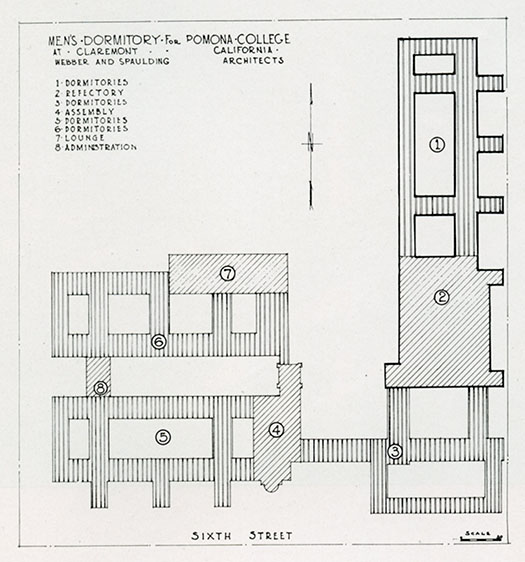
Generations of North Campus residents have wondered: “Why Clark I, III and V?”
This basic site plan, which appeared in the program of the 1929 building dedication for Clark I and Frary Dining Hall, provides the answer. When architect Sumner Spaulding was hired in 1926 to design what was to be known then as the “men’s campus,” his proposal included four dormitories and a refectory, assembly hall, lounge and office—a total of eight buildings. As seen here, each was assigned a number.
Only the first two phases of the project were completed, however—Clark I and Frary Dining Hall in fall 1929, and Clark III and Clark V in fall 1930. The numbers appear to have been simply for reference purposes. Over the years, more than a few creative theories have been spun to explain the absence of a Clark II and IV, but, as often happens, the truth is far simpler and more mundane than might have been hoped. The dormitories were named in honor of trustee and donor Eli P. Clark. Frary Hall, gift of trustee George W. Marston, was named for Lucien H. Frary, former pastor of Pilgrim Congregational Church.
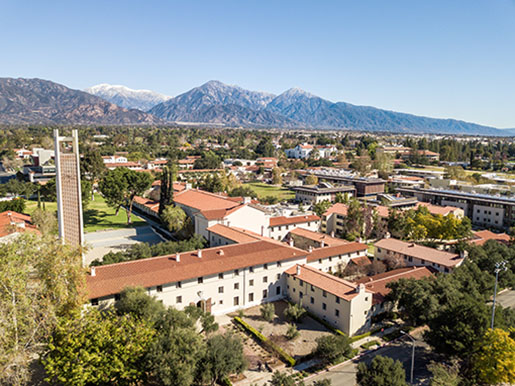
Bug Hunters

Last October, biology major Hannah Osland ’20 biked to the Pomona College Farm with a single mission. She would wait by the compost bins, clutching a glass jar filled with ethyl acetate gas—her “kill jar”—until she captured a yellow butterfly she had seen earlier. In total, she spent an hour looking. “I was so frustrated that this little tiny butterfly was beating me,” she says. “It’s amazing how insects will evade me.”
Osland needed to catch and identify the butterfly, known as a small cabbage white, for her Insect Ecology and Behavior class with Professor Frances Hanzawa. For their project, Osland and nine other students captured 40 unique insect specimens from at least 11 different insect orders. Twenty had to be identified down to the scientific family they belong to—a difficult task given that, as Osland tells it, “so many beetles look alike.”
For Osland and other students, the project became a constant source of fascination among friends, many of whom tried to help nab new insect species. (A point of pride among one of Osland’s friends is the grasshopper he caught for her.) Her final collection of insects included bees, ants, butterflies, grasshoppers, beetles and more. “I don’t think I’ll ever forget insect orders now,” she says. “It’s totally ingrained in my brain.”